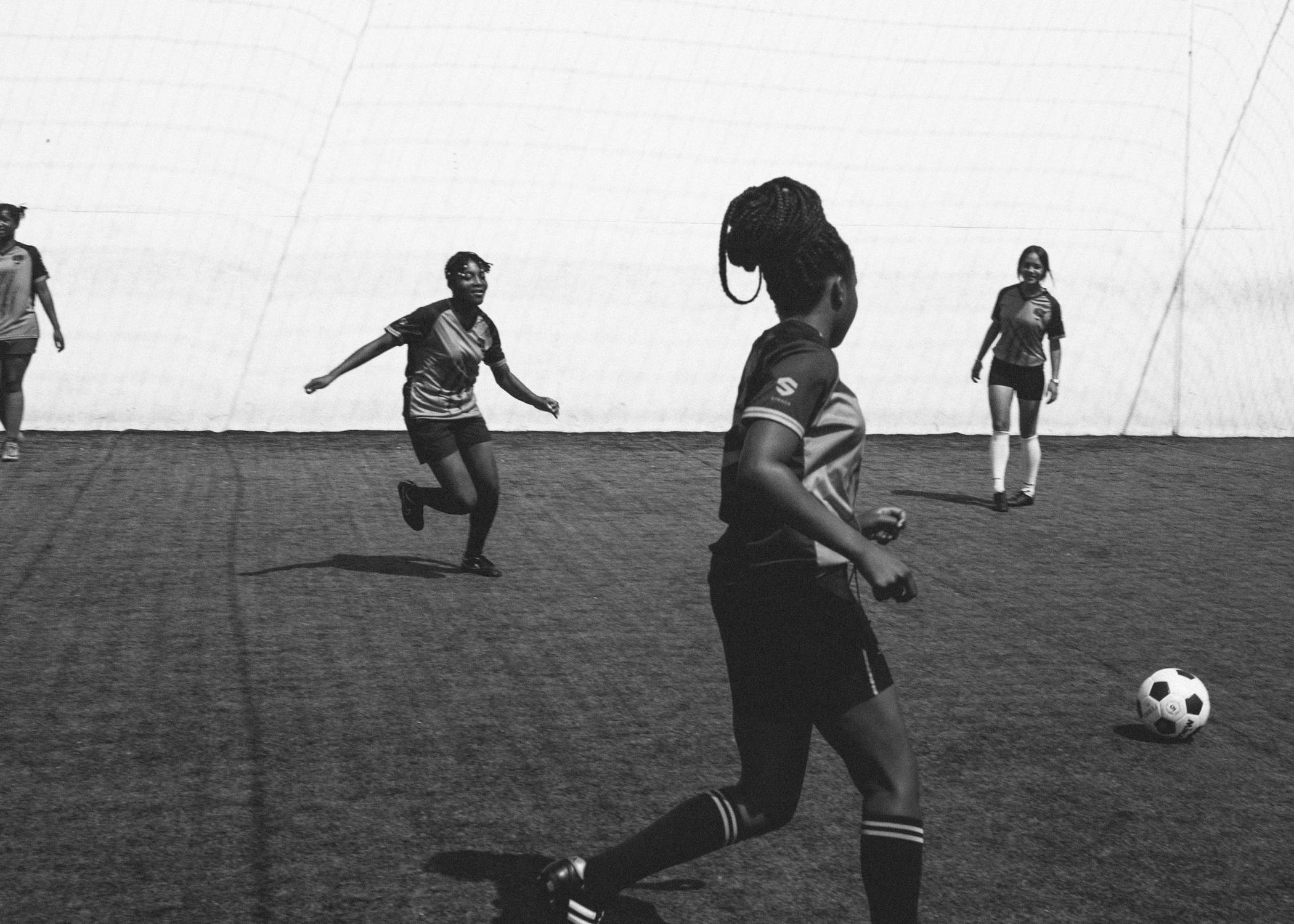Contrary to popular belief and observation, the greatest athletes WILL be MADE, not born. As idealistic as this may sound based on today’s “freakish” athletes dominating sports, this idea is imminent and will have major implications for future athletes as the art of athletic performance enhancement advances. Most coaches are already cognizant of the fact that there are many aspects to becoming a great athlete, but to what extent? For the athletic performance specialist, this philosophy involves the different movements of the athlete’s sport. Nonetheless, oftentimes a specific physical ability gets mistakenly placed into an inaccurate category.
For instance, athleticism is a term commonly thrown around. But what is athleticism in its purest sense? For most, it involves how fast one covers a given distance (e.g. 40 yards) or how high one jumps from a static position (e.g. vertical jump). These measures are more representative of one’s top speed. As discussed in the article “Train What YOU Can Train”, these types of physical traits depend on mostly untrainable qualities. But luckily, top speed may not be the most important trait, even when it comes to physical abilities for most sports!
While there are those athletes that are blessed with the traits of being able to reach high top horizontal and/or vertical speeds, there are many other factors to being a complete athlete. In fact, one’s top speed may actually be useless for most sports outside track-and-field. Rather, it may be more important HOW the athlete reaches his/her top speed.
More specifically, most sports involve a temporal (i.e. time) component. In other words, the faster athlete will be at an advantage in most instances. Although this sounds like an obvious fact, physics shows that in the case of how high one jumps, the determinant is the velocity at takeoff, irrespective of how quickly one reaches this velocity. However, for sports, an athlete that can reach his/her takeoff velocity quicker may win the vertical battle, such as rebounding a basketball.
Time being a factor essentially implies that acceleration is the variable of interest. For a more detailed discussion on acceleration as it relates to sports, please refer to the article “The Kinematics of Athletic Performance”. In essence, if the athlete cannot accelerate quickly, then he/she will not reach his/her top speed fast enough.
In the rawest sense, a sprinter is in a race with time to beat his opponents over a fixed distance. Comparing this to a high-jumper, the athlete is not in any type of race. Thus, how quickly the sprinter accelerates, or reaches his/her top speed is a major factor, as opposed to the high-jumper. What does this imply? That the sprinter’s peak force output via triple extension of the legs can dramatically influence how fast the athlete reaches top speed, as force determines acceleration, based on Newton’s Second Law of Motion. Not exactly rocket science, but yet a commonly overlooked fact. Once again, why discuss peak force output? Because peak force is one of the highly trainable physical traits! This is discussed in more detail in the article “Train what YOU can Train”.
From a more practical viewpoint, how does the physique of a sprinter compare with a high jumper’s? Any noticeable differences in muscle mass? Most would agree the sprinter is more muscular, most importantly in the lower body. In addition, doping to increase muscle mass and strength has been prevalent with sprinters more so than high jumpers. Why this difference in muscle for the two athletes? As mentioned before, acceleration is a factor for sprinting, implying peak force output is also a factor. How is peak force generated? Through stronger muscles! And as discussed in the article “Train what YOU can Train”, increasing one’s muscular cross-sectional area will result in an increase in peak force output, assuming motor recruitment is maximized as well. Nonetheless, it is important to realize that as distance increases, the acceleration phase will be less of a factor than the top speed in how fast one covers the longer distance. This is also a natural consequence of muscle physiology since muscles can only produce high peak force output in short bursts.
In contrast, many sports clearly exemplify the importance of acceleration over short distances including football, baseball, soccer, baseball, and many others beyond the scope of this article. Looking at basketball, for instance, many are concerned with linear speed for being able to drive to the basket explosively (i.e. quick first-step). Most drives in basketball are initiated at the 3-point line, which in the NBA is 23’9”. It is safe to say this distance is far too short for one’s top speed to be a factor, unlike longer distance sprints such as the 100-meters. In other words, raw athleticism may not be as large a factor when concerning basketball linear speed. Instead, in its purest sense, linear acceleration may be most important.
Thus, an athlete who is not blessed with the greatest raw athleticism (i.e. high top speed) may not actually be at a disadvantage at all when it comes to a major physical trait for a basketball player (linear acceleration), even in the athletic sense. If one focuses on increasing peak force output of the triple extension motion of the legs via proper strength training, then one’s peak acceleration should likewise increase. This has major implications for having an explosive first-step in basketball, for instance.
Furthermore, what about deceleration? Deceleration is a type of acceleration where velocity is decreasing. Again, this implies a generation of force needed to dissipate energy. The higher one’s initial velocity prior to stopping, the higher the peak force output required to decelerate quickly.
Rapid change-of-direction involving deceleration is crucial to success in many sports, just as is acceleration. Therefore, when one strengthens his/her muscles in an appropriate fashion, one can take advantage of being a very “shifty” athlete being able to rapidly change direction and perform many of the explosive moves required for his/her sport. This fact cannot be overstated, as some of the forces required for stopping can be extremely high, considering how deceleration is quicker than acceleration in most instances.
For example, a 200 lb runningback that is hypothetically running at his/her top speed of 20 mph represents approximately 3,624 joules of kinetic energy. To stop in one second, this would require nearly 5 horsepower! Remember, we’re speaking of humans, not horses or machines. Granted, this scenario may be unrealistic to an extent (e.g. friction between the footware and ground will need to be extremely high), but it illustrates the greater emphasis and reliance on trainable qualities (as opposed to raw athleticism) such as strength, peak force output, and peak power output for quicker sporting movements.
It is also important to remain aware that peak force output varies with velocity. Everyone has a unique force-velocity profile where one’s max force varies with the velocity of the movement. Since power is the product of force and velocity, this implies everyone has a unique power profile that varies with velocity of the movement as well. Quite simply, the velocity component is less trainable while the force component of power is trainable to a larger degree, allowing one to dramatically increase power for sports as well.
Let’s shift from the horizontal plane of sports movements to the vertical. As discussed in the article “Train what YOU can Train”, higher peak force output (e.g. strength) may have implications for jumping higher as well, from a physics standpoint. However, time is not a factor in how high one jumps as long as the athlete reaches his/her top speed within a given range of motion.
But how about instances involving jumping where time is a factor? This is certainly true in a sport such as basketball which has an omnipresent vertical component. Specifically, activities such as rebounding are essentially a vertical race for the ball. If two athletes can jump equally high (i.e. vertical takeoff speeds are equal) and initiate their jumps at the same point in time, then the athlete who reaches his/her takeoff speed faster will get to the ball first. Reaching a speed faster, sound familiar? This implies acceleration, which implies force!
Finally, the athletic performance specialist must always remain aware of the SAID principle when training for peak force. As mentioned in the article “Misapplications of the SAID Principle”, one must be mindful of the exact forces involved for strengthening the movement. For instance, when concerning linear deceleration, the center-of-mass (COM) will naturally shift backwards behind the feet. The feet sticking to the ground from friction represents a pivot point about which one’s COM must shift backwards to prevent one’s inertia from forcing the athlete to fall forward and out-of-balance. The greater the deceleration, the farther one’s COM must shift back.
Accordingly, a sport-specific strengthening exercise is one that mimics the aforementioned configuration with the direction of forces being matched appropriately. A smith machine squat with the feet in front of the coronal plane of the body may be an appropriate choice. Similarly, forward linear acceleration involves shifting the COM in front of the body. Similar force-pattern analyses may be carried out to design the best sport-specific strength exercise for forward linear acceleration.
Ultimately, these are a few of the examples of how raw athleticism can be misconstrued as being applicable to another physical trait. Being aware of the laws of physics and practical observations allows for the least amount of guesswork with athletic performance enhancement. As repeatedly mentioned and concluded through various analyses, athletic performance enhancement depends on an infinite number of variables.







